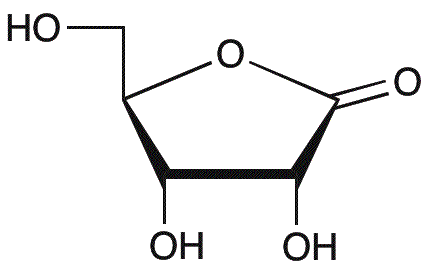D-(+)-Ribonic ?-lactone is widely utilized in research focused on:
- Biochemical Research: This compound serves as a valuable intermediate in the synthesis of ribonucleosides, which are essential for RNA structure and function studies.
- Pharmaceutical Development: It is used in the formulation of drugs that target viral infections, particularly those affecting RNA viruses, enhancing therapeutic efficacy.
- Food Industry: D-(+)-Ribonic ?-lactone is explored as a natural flavor enhancer, contributing to the development of healthier food products without artificial additives.
- Cosmetic Applications: The compound is investigated for its potential in skincare formulations, promoting hydration and skin barrier function due to its sugar alcohol properties.
- Biotechnology: It plays a role in the production of ribonucleic acid (RNA) in laboratory settings, facilitating genetic research and the development of RNA-based therapies.
General Information
Properties
Safety and Regulations
Applications
D-(+)-Ribonic ?-lactone is widely utilized in research focused on:
- Biochemical Research: This compound serves as a valuable intermediate in the synthesis of ribonucleosides, which are essential for RNA structure and function studies.
- Pharmaceutical Development: It is used in the formulation of drugs that target viral infections, particularly those affecting RNA viruses, enhancing therapeutic efficacy.
- Food Industry: D-(+)-Ribonic ?-lactone is explored as a natural flavor enhancer, contributing to the development of healthier food products without artificial additives.
- Cosmetic Applications: The compound is investigated for its potential in skincare formulations, promoting hydration and skin barrier function due to its sugar alcohol properties.
- Biotechnology: It plays a role in the production of ribonucleic acid (RNA) in laboratory settings, facilitating genetic research and the development of RNA-based therapies.
Documents
Safety Data Sheets (SDS)
The SDS provides comprehensive safety information on handling, storage, and disposal of the product.
Product Specification (PS)
The PS provides a comprehensive breakdown of the product’s properties, including chemical composition, physical state, purity, and storage requirements. It also details acceptable quality ranges and the product's intended applications.
Certificates of Analysis (COA)
Search for Certificates of Analysis (COA) by entering the products Lot Number. Lot and Batch Numbers can be found on a product’s label following the words ‘Lot’ or ‘Batch’.
Número de catálogo
Número de lote/lote
Certificates Of Origin (COO)
This COO confirms the country where the product was manufactured, and also details the materials and components used in it and whether it is derived from natural, synthetic, or other specific sources. This certificate may be required for customs, trade, and regulatory compliance.
Número de catálogo
Número de lote/lote
Safety Data Sheets (SDS)
The SDS provides comprehensive safety information on handling, storage, and disposal of the product.
DownloadProduct Specification (PS)
The PS provides a comprehensive breakdown of the product’s properties, including chemical composition, physical state, purity, and storage requirements. It also details acceptable quality ranges and the product's intended applications.
DownloadCertificates of Analysis (COA)
Search for Certificates of Analysis (COA) by entering the products Lot Number. Lot and Batch Numbers can be found on a product’s label following the words ‘Lot’ or ‘Batch’.
Número de catálogo
Número de lote/lote
Certificates Of Origin (COO)
This COO confirms the country where the product was manufactured, and also details the materials and components used in it and whether it is derived from natural, synthetic, or other specific sources. This certificate may be required for customs, trade, and regulatory compliance.


